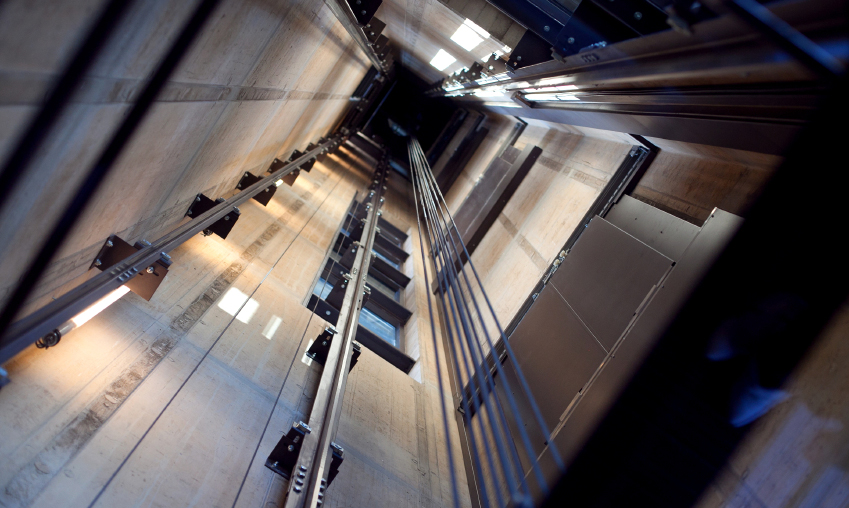From hydraulic to rope, there are many different kinds of elevators, and they each work differently. The two main types of elevators are hydraulic elevators and roped elevators. Today we’ll go over what each type is and how they work to efficiently and safely transport people from floor to floor.
 Hydraulic Elevators
Hydraulic Elevators
A hydraulic elevator features the following parts:
- Cylinder
- Piston
- Fluid reservoir
- Rotary pump
- Valve
- Hydraulic fluid
This type of elevator depends on basic hydraulic principles to move the cars up and down. When you push the button for a hydraulic elevator to take you to a different floor above you, the pump sends fluid into the cylinder, closing a valve designed to pressurize the fluid and then push the piston upwards.
This, in turn, propels the elevator up. Once it reaches the right floor, the pump shuts off and the elevator car stops moving. If you want to go down, the opposite action will take place, whereby the valve opens and releases fluid into the reservoir as the elevator travels downward.
Hydraulic elevators are ideal for low-rise applications because they are limited in the heights they can reach within a given building. That’s due to the fact that they need a piston to push them up from underneath.
They are fast and safe to install, and feature space-saving designs with machine-roomless applications. Hydraulic elevators typically have lower lifecycle costs as compared to a traction or roped model with the same height capacity. This has made them the gold standard for reliability within low-rise buildings.
Roped Elevators
A roped elevator features the following components:
- Steel ropes
- Sheave that hoists the ropes
- Electric motor
- Counterweight
- Guide rails
- Gear train
A roped elevator is similar to the workings of a seesaw, as it balances the weight of the elevator car as well as the weight inside the car with a counterweight. The motor moves the elevator up or down based on the desired level when you push the button.
Also known as traction elevators, roped elevators rely on a system of ropes and pulleys that move the car up and down. They are the most common type of elevator today, ideal for use in mid-rise and high-rise buildings.
Safety Systems
No matter what kind of elevator you have in your building or home, it must come with reliable safety systems that are in compliance with local and federal rules. Such systems are in place to prevent accidents such as an elevator car from freefalling, for instance. Safety systems should be inspected and maintained regularly to ensure proper operation.
Contact Mowrey Elevator
Now that you know how an elevator works, it’s time to purchase the parts you need for your own elevator. We offer a variety of parts for residential and commercial lifts. Check out our online catalog and contact us with any questions.
